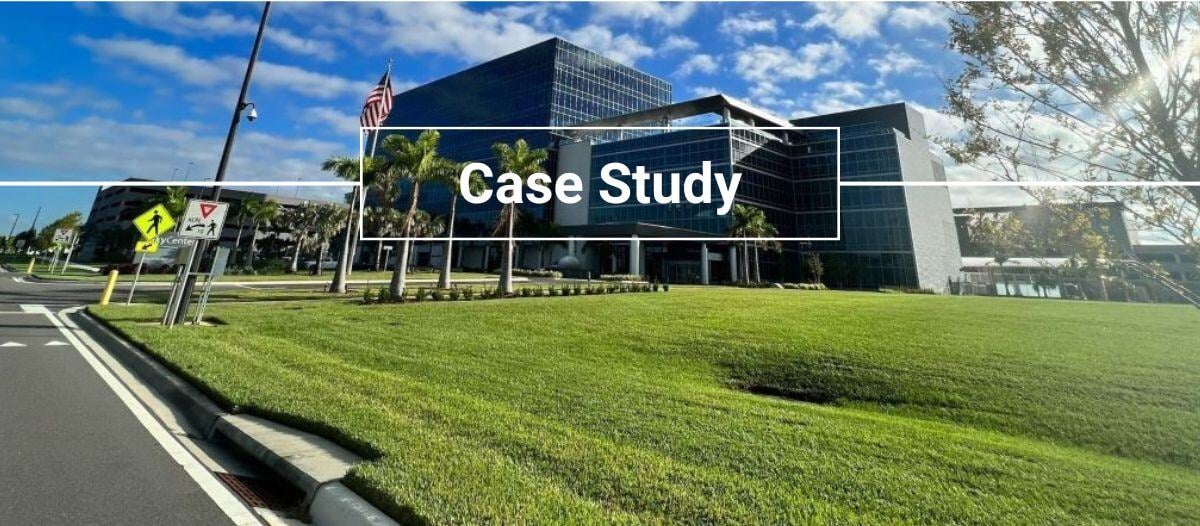Perfect Planning
Choosing the right time to launch upgrades

As digital transformation shapes the modern workforce, choosing the right time to upgrade equipment and software for facility management can be a challenge. Ultimately, the growing collaboration with business intelligence tools and IoT provides a level of efficiency that will undeniably change the future of the facility management industry. Choosing when to upgrade requires communication and action from C-suite executives to entry-level employees, fostering a culture of innovation that drives workplace productivity. From reducing labor costs to compliance initiatives, choosing the right time to upgrade requires detailed planning, strategy and partnership for successful execution.
Identifying current facility pain points
The first step in developing any plan for upgrading is identifying current pain points faced not only in FM but across all departments of the organization. Upgrading software, workflows and other technological tools will provide near-immediate benefits for FM employees, but there will be a rippling effect that enhances daily productivity for all employees. Business intelligence tools continue to expand rapidly, and as a team, understanding what issues are most vital to correct helps narrow upgrading choices. Note that choosing current pain points is essential, but considering future pain points is just as important. As the FM industry and organizations expand, strategizing potential issues down the road allows teams to plan for growth proactively and how new technology will impact business.
Outside of initial frustration over outdated software as it relates to workflows, pain points also include external factors. Budget considerations from directors or C-suite executives and resistance to change from current employees are just a few additional considerations each team faces. In an April 2023 podcast from McKinsey, Chief Client Officer Liz Hilton Segel said: “The CEO challenge or opportunity is to keep up the aspiration and pace of technology transformation but to be clear-eyed about whether that transformation is, in fact, helping deliver growth and margin outcomes.” Digital transformation is a clear indicator of growth; however, it is the responsibility of FM teams, especially managers, to identify clear metrics for return on investment (ROI), productivity and more to maintain funding and resources from directors and executives.
Furthermore, FMs should navigate the pain point of resistance to change before upgrading to streamline the implementation process. Resistance to change often comes from a lack of understanding or clear communication by management, which is why it is essential that FM leaders begin the upgrade process by outlining goals and explaining long-term benefits. This allows employees to understand that although there may be a learning curve, the benefits of upgrading will significantly outweigh the initial frustration of using a new system. As a result, employees can begin the upgrading process in collaboration with managers, fostering a workplace of innovation.
Navigating capabilities & integrations
After setting a clear outline of pain points and potential challenges, the next step in choosing the right time to upgrade technology is prioritizing software capabilities and integrations. This begins with identifying current daily workflows and classifying what other point solutions or systems are essential to daily business. This can look vastly different in each industry. For example, FMs in higher education may consider integrations with smart lockers or self-service kiosks, whereas enterprise organizations may focus on workspace optimization integrations.
One of the main goals of digital transformation is to foster a seamless workflow process, which means choosing a system with industry-specific capabilities and integrations. Not only is it important to consider current needs, but managers and directors should be focusing on the future needs of the organization as well. Upgrading a system is not a simple task, and when choosing the right time to upgrade, interdepartmental collaboration is vital so that the resources provided by these upgrades will serve the entire organization for years, if not decades, to come.
With extensive technology growth, the FM industry is experiencing a compound annual growth rate of 13 percent, meaning that the market is expected to surpass US$5 trillion by 2032. For FM teams, this means that there is no if when it comes to upgrading, it is a matter of when. Outside of the growing FM market, choosing the right time to upgrade comes down to overarching business goals outside of the FM department. After navigating a tumultuous past few years, along with some economic uncertainty throughout the remainder of 2023 and into 2024, upgrading FM technology may not seem like a priority. However, making the choice to upgrade proactively will provide savings and efficiency both monetarily and through labor.
When upgrading, the initial thought process of many teams begins with the implementation cost. Working from a strategic standpoint, considering the savings post-implementation is the way to go. Consider a large enterprise facility with little to no oversight of the health of its assets and machinery. Teams are spending exorbitant amounts of money to conduct reactive and emergency maintenance, losing revenue from increased asset downtime, and spending significantly on energy costs for both asset repair and interim replacement. Upgrading would have provided the resources needed to create a proactive preventive maintenance schedule, identify metrics such as mean time between failure or repair, and optimize labor costs for preventative measures. Upgrading systems within a facility does not just fix one thing; it propels efficiency across the entire organization.
Looking outside the box: compliance & ESG initiatives
While choosing the right time to upgrade heavily focuses on the daily needs of the facility management team, organizational requirements such as regulatory compliance or ESG initiatives should also be included in the decision. So, how does FM impact regulatory compliance? FM impacts regulatory compliance requirements across an entire organization, including building and safety regulations, environmental regulations and data protection laws, just to name a few.
As it relates to building and safety regulations, choosing the right time to upgrade should be proactive to avoid potential hazards. Outside of streamlining daily workflows, FM technology helps track and automate maintenance across a facility, as well as ensure regularly scheduled inspections are performed for critical systems such as fire suppression systems, elevators and more. In addition to automation and scheduling, upgrading systems also provides the resources for incident reporting and data analysis to identify any patterns in equipment failure, accidents or injuries. This is not just about tracking for internal purposes but ensuring that compliance requirements are exceeded by providing documentation resources for governmental regulatory agencies.
ESG, or environmental, social and governance, represents the idea that the environment is only one factor in determining the sustainability of an organization. In recent years, ESG initiatives have skyrocketed, as ESG has become an essential consideration for directors, stakeholders and investors. For FM leaders, ESG is one of the largest considerations in determining the timing for upgrades, as expanding ESG initiatives requires teams to pivot and accelerate their business strategy.
ESG impacts the facilities sector in all three areas. Environmentally, upgrading FM technology can significantly reduce the carbon footprint of an organization, reducing labor, materials and energy used in maintenance and building expansion. Socially, FM technology plays a critical role in improving data security, especially in industries dealing with sensitive customer data, such as health care, finance or government. Furthermore, advanced FM systems provide opportunities for greater interdepartmental communication and improved customer success, streamlining company-wide interaction.
Finally, FM technology plays a role in the governance portion of ESG through transparency and risk management improvement. By providing a centralized platform for key facility management metrics such as energy use or waste generation, stakeholders can analyze data efficiently. Additionally, utilizing FM software tools for risk management and hazard identification enhances compliance strategy, resulting in a streamlined ESG strategy that will prepare an organization for significant investment and growth opportunities.
Fostering the future of FM
The final recommendation in choosing the right time to upgrade comes through a macro-level focus on the FM industry. Navigating current pain points, identifying needs and improving strategy for compliance and ESG are all aspects that current FM professionals face. But what does the next decade of FM look like? Upgrading systems is not just a solution to current pain points but a significant step in preparing the next generation of FM to succeed.
Forty percent of FM professionals are set to retire by 2026. With less than a three-year span left before almost half of FM professionals are replaced, upgrading technology is a proactive choice that will ultimately change the departmental trajectory. With Millennials and Gen-Z replacing these positions, the need for technology is ever-present. Not only have these generations grown up surrounded by technology but view it as an essential tool for success. Technology is not seen as a burden but rather a resource that continues to enhance both short- and long-term organizational productivity.
When considering upgrading, think about the needs of the FM team, but also research competitors. Each organization is in the same position, searching for viable, effective digital solutions to serve the needs of customers and employees. The rate of technological growth has resulted in an expedited need for change, and choosing to invest in digital transformation and technology upgrades has become increasingly complex. When considering upgrading, taking a strategic, collaborative and industry-centered approach will provide the knowledge and resources needed to facilitate a level of success sure to help facility management teams flourish.

Michael Saldi is the founder and CEO of SCLogic, a global facilities software company specializing in logistics solutions for enterprise, higher education, government, health care, pharmaceutical and banking industries. He is also a member of IFMA Chesapeake. As a thought leader in the facilities and logistics industries, Saldi is passionate about the impact of digital transformation and artificial intelligence on the future workforce.
References
mckinsey.com/capabilities/strategy-and-corporate-finance/our-insights/six-ceo-priorities-for-2023
gminsights.com/industry-analysis/facilities-management-market
spaceiq.com/blog/facilities-management-and-millennials/
Read more on Communication , Technology and Training
Explore All FMJ Topics









